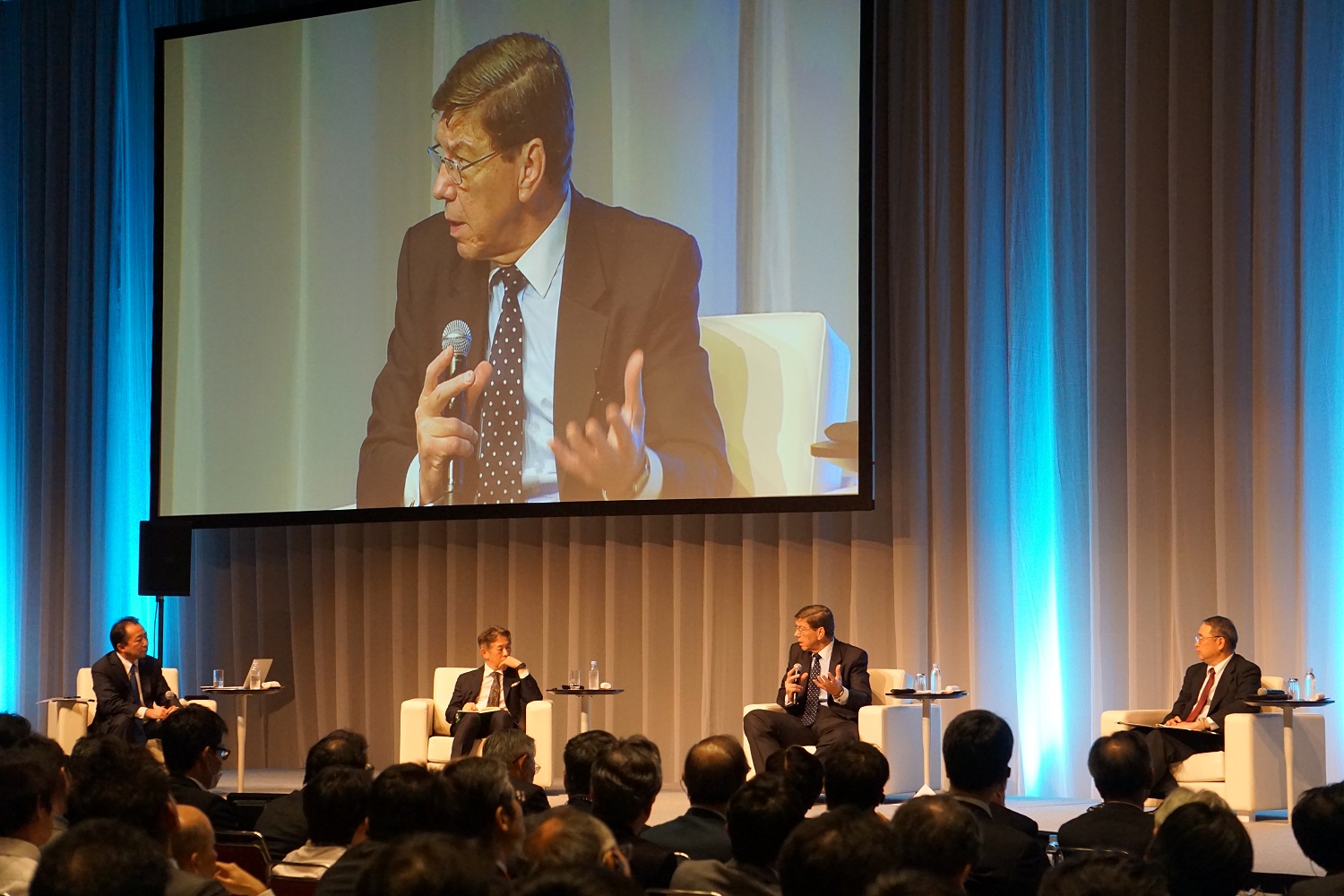Newsニュース
MODELS OF CORPORATE INNOVATION SYSTEMS: Insights from a panel discussion co-hosted by JIN with Professor Clayton Christensen

Insights from a panel discussion co-hosted by JIN with Professor Clayton Christensen, Harvard Business School and author of The Innovator’s Dilemma and The Innovator’s Solution, Mr Nobuhiro Endo, President of NEC, and Mr Hideaki Omiya, president of Mitsubishi Heavy Industries.
Noboru Konno, President of Japan Innovation Network, kicked off the conversation by asking a fundamental question to all panellists and the audience-at-large:
WHY DOES A CORPORATION EXIST? WHAT IS ITS PURPOSE?
Professor Christensen answered the questions by explaining the basic conditions needed for two groups to work with one another:
- Ability to identify specific deliverables
- Ability to measure what has been delivered
- Identify and navigate the interdependencies between the customer and supplier
If one or more of the conditions are not met, then an entity must be created that brings the two separate parties into the same organisation and allows the ability to share resources and information.
But Japanese corporations have a more holistic perspective on the purpose of a corporation. Mr. Nobuhiro Endo, President of NEC Corporation, stated that founder Kunihiko Iwadare started NEC with the intention that the company would live forever and would “continuously provide value to human beings.” Mr. Hideaki Omiya, President of Mitsubishi Heavy Industries (MHI), described three principles maintained at his company. The first of which is “strive to enrich society, both materially and spiritually, while contributing towards the preservation of the global environment.” Mr. Omiya stated that although these principles were established more than 80 years ago, they are “old but not obsolete.”
The values exemplified by NEC and MHI are admirable and inspiring. The most basic role of a corporation is to “help other people to become better people,” Mr Christensen said. He continued that “if managers create a culture inside their corporations that inspire their employees to become better or more capable people that is the very essence of the purpose of life. There is no other organisation in the world that can provide this…no one has the scope to help people become better people like a corporation has.”
WHAT ORGANISATIONAL CAPABILITIES ARE NECESSARY TO INNOVATE CONTINUOUSLY AND PREPARE FOR DISRUPTIVE INNOVATION?
Japan is no stranger to disruptive innovation. The history of Japanese business contains numerous examples of disrupting and being disrupted, from personal electronics to bicycles and cars. However, many Japanese disruptors now are mature companies. As companies grow and pursue profits, they make better and higher-quality products. As companies go upmarket, some customer segments remain unserved. Competitors enter the market by making a good product for a lower price to meet the unserved needs. However, when large corporations look at their new competitor’s market segment, they see less profit compared to the return on improving existing products and decide to stay on their original path.
“It is really important that under the corporate umbrella that we have the ability to nurture several different business models,” Mr Christensen said. He explained that there are three types of innovations and each serves a different purpose. Businesses often fail to recognize that the three types are a complementary system and instead pit the three innovations types against one another. As Professor Christensen explained, “market-creating innovation creates growth; sustaining innovation helps us keep our margins high; and efficiency innovations make us more efficient to do more with less.” Comparison based on the rate of return will result in efficiency innovations always providing a higher rate of return than sustaining innovations and even a higher rate than market-creating innovations. However, it is only from market-creating innovations that high future growth becomes possible.
One way that Professor Christensen suggests trying to break out of that mould is to try making multiple, smaller business units. Smaller business units can see the smaller opportunities better than a large, monolithic company. Professor Christensen also suggested using Discovery Driven Planning as another way to internally manage innovation ideas.
WHAT IS A LEADER’S JOB IN CONTINUOUS INNOVATION?
Leaders must be at the forefront of establishing an environment that can support innovation and includes developing an open mindset, supports research and education as well as provides the proper toolsets and facilities. But the question remains of how deeply a CEO can be involved with the everyday operations of the company.
Mr Omiya made an excellent point when describing the changing role of a founder CEO versus a salaryman (the once ‘typical’ Japanese, lifetime-employed, career office worker) CEO. A founder CEO was viewed as a genius and expected to be at the helm for his entire lifetime, as was Mitsubishi’s founder Yataro Iwasaki. On the other hand, even though very talented, salaryman CEOs have a limited term in office and are often seen as managers rather than visionary leaders.
In response, Professor Christensen reiterated the need to focus on what he calls “jobs to be done.” Focusing on customers’ individual characteristics can lead to extrapolating the right triggers for consumers to buy a product or service. “Who I am doesn’t cause me to buy anything,” as he put it. Instead, as everyday life happens, situations arise that must be addressed and it is within these instances that people decide that they must hire or buy a product or service. “The important point is that in innovation, it is not the customer whom we need to understand. The customer is very unpredictable, but the job he or she is trying to solve is not.”
In closing, Professor Christensen offered the following insights, “innovation is going on everywhere and the problem is not innovation but just to try to think about management in a new way. So I think we should be proud of our past and excited about the future.”
By Maria Gordon
